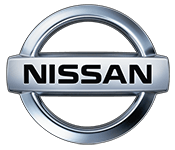Each of the Nissan cars possesses a 17-characters code that can be used for identifying this very vehicle. Despite the fact that this code seems to a randomly generated thing, it can be deciphered with the Nissan VIN decoder in a few seconds. You will know the information about the equipment of the car and the engine type. You can find the VIN code on the dashboard that's under the windshield right near the hood. You will see 17 symbols.
If you see JN1 at the beginning of the code, this vehicle was produced in Japan. If you see 5N1, this car was made in the USA. It's up to you to choose which variant you prefer. To know what type of the engine you have, look at the next character. Nissan VIN can have F for KA24E engine. If you feel you got lost in the code or deciphering the symbols separately is simply boring, use the VIN decoder Nissan to assist you.
You can learn the following things when using a decoder:
- The engine type and the model line;
- The body type and the equipment;
- A model year of the car;
- The assembly.
By using the decoder you will be able to pick up the right car with the equipment that corresponds to your preferences and needs without the need to see the car with your eyes, If the Nissan you have seen online suits you, you can have a meeting with the owner of it and compare information from the decoder with the real state of the car.
Nissan VIN Decoder for options
Besides the place we've mentioned above, there are other spots where you can look for the VIN code on your Nissan car:
- A card in the spare tire area;
- In the manual that comes with the car;
- Below the hood, on a frame;
- On the driver's door pillar;
- On the price sticker - for later models.
Now, you know where you can search for the VIN number, what information you can get with the Nissan VIN number decoder, but why is it so important in everyday life besides satisfying the curiosity about the car? You will need the information from the decoder for knowing if the car was repaired seriously with the change of its components. In this case the VIN number on the dashboard will differ from the number on other parts of the car.
It's important to use the Nissan VIN decoder for options like buying a new or used car. If you're looking for the car online, you will need to know the code to decide where it's worth spending time and money on it. There's one thing that you don't have to bother about. It's the difference in years. You can have the situation when the year of the car from the code is 2000 and the year in the registration card is 2001 or 1999. It doesn't mean the owner is lying to you or the car has a wrong code.
The VIN code contains the model year of the Nissan vehicle, but not the year when it was manufactured. You can find the cars of the next years that are already sold in November or December of this year. Some of the VIN symbols can be replaced with ZZZ if the car was produced for the European market. They don't have strict laws about assigning the codes according to the US standards. If you want a clear and precise VIN code where all the information is stored, it's better to choose a real American Nissan.
Nissan Sample VIN
- 1N4AL3AP1JC126527 — 2018 Nissan Altima 2.5 S (2.5L L4 DOHC 16V), SEDAN 4-DR
- 5N1AT2MK8FC879625 — 2015 Nissan Rogue S AWD (2.5L L4 DOHC 16V), SPORT UTILITY 4-DR
- 3N1AB7AP2DL699243 — 2013 Nissan Sentra S 6MT (1.8L L4 SFI DOHC 16V), SEDAN 4-DR
- 3N1BC1CP2BL363438 — 2011 Nissan Versa 1.8 S Hatchback (1.8L L4 DOHC 16V), HATCHBACK 5-DR
- 1N4BL21E38C249950 — 2008 Nissan Altima 3.5 SE (3.5L V6 DOHC 24V), SEDAN 4-DR
Was this article helpful?
